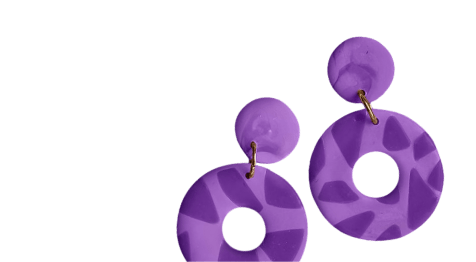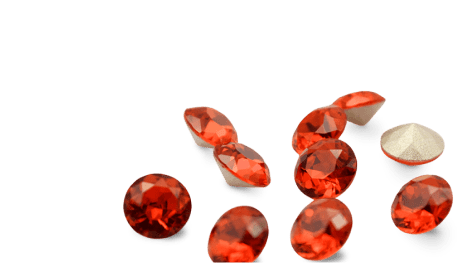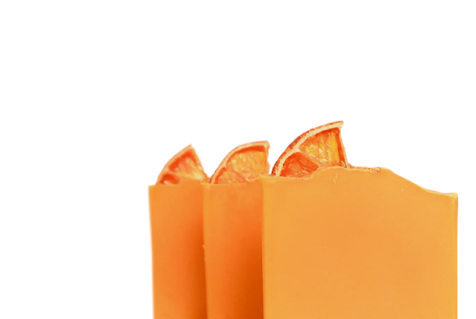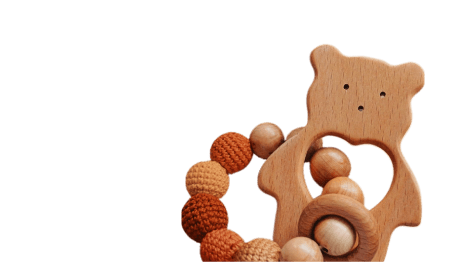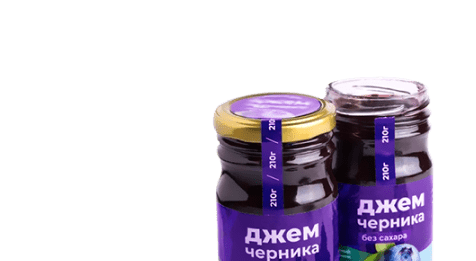SYNTHETICS AND SIMULANTS
“Coral Sea” agate. At the AGTA show, Bill Heher (Rare Earth Mining Co., Trumbull, Connecticut), had some new doublets that were marketed as Coral Sea agate (figure 15). Formed of natural lace agate from Oregon on a reconstituted turquoise backing, the polished slab had scenes resembling a coral reef. The concept was developed by lapidary Fred Graupp (Robesonia, Pennsylvania). Sizes ranged from 18 13 mm ovals up to free-form pieces of 70 mm or larger. Mr. Heher stated that he has sold over 200 pieces, but supplies are limited because the production process is very labor intensive.
Thomas W. Overton![]()
Figure 15. Doublets of lace agate and reconstituted turquoise, sold as Coral Sea agate, often resemble coral reef scenes. The piece shown here weighs 37.40 ct; its assembled structure is apparent when viewed along the edge.
Composite photo by Robert Weldon.
Dendritic agate in doublets, inlays, and jewelry.
The Fall 2008 GNI section (pp. 262–263) reported on a large selection of dendritic agate from central India. The stones were fashioned by Indus Valley Commerce (Ghaziabad, India) to reveal an array of colors and patterns, in a clarity range of transparent to translucent. At the Arizona Mineral and Fossil Show, the company exhibited some attractive new applications of the material, in the form of doublets, inlays, and pendant jewelry. The doublets are produced by bonding a cap of clear quartz to a typically thin layer of agate, giving it a beveled appearance (figure 16). According to company director Tarun Adlakha, the museum-grade epoxy and two-week curing process ensure strength and color stability, even under UV exposure. The inlays (figure 17) offer other interesting design possibilities, with dendritic agate discs framed inside of other gem materials such as rock crystal, jasper, chrysoprase, obsidian, tiger’s-eye, and banded agate. The agate pendants (e.g., figure 18) are made by hand and combine Mogul-inspired floral motifs with garnet, spinel, emerald, sapphire, and old-cut diamond accents. The agates in the inlay and jewelry pieces range from 6 to 50 mm.
The 2008 GNI report noted that Indus Valley Commerce had planted cucumbers and other deep-rooting vines to loosen the alluvium along the Narmada River and draw the agate nodules to the surface. While that method is still used to some extent, most of the mining is now done by conventional digging, in pits as deep as 50–60 feet (15–18 m). Current production totals 7,000–8,000 finished pieces annually.
Stuart D. Overlin
![]()
Figure 16. The profile view of this 16 25 mm agate doublet reveals its quartz cap.
Composite photo by Robert Weldon.
A new rough nephrite imitation.
Nephrite jade has a rich 7,000-year history in Chinese culture. However, imitations made from marble and serpentine are often seen in the Chinese market. In early 2010, a new type of artificial rough nephrite appeared. This material is difficult to identify with the unaided eye, and its market presence continues to grow. To characterize this new imitation, we purchased two samples (3 and 15 kg) from a market in Hetian (Xinjiang Uygur Autonomous Region) in the summer of 2010, and studied their gemological properties using microscopic and spectroscopic techniques at the National Gemstone Testing Center (NGTC) laboratory in Beijing.
The material was white with unevenly distributed orangy brown areas (figure 33). In some areas the color appeared to be applied with a brush, with traces of brushstrokes visible. To imitate the appearance of natural nephrite, pits and cavities had been etched into some areas of the surface. These were larger than those typically seen in natural nephrite, and had a lower luster than the surrounding areas. In addition, polish lines were visible with magnification. Unlike natural nephrite, which can show deep cracks, these samples had few fractures and they rarely extended into the interior. We noted a consistent depth of color in and around the fractures, which would also be unusual in natural material. The hardness was very low (approximately Mohs 2.5), and the material was easily scored with a knife.
![]()
Figure 33. When broken open, this imitation nephrite sample (originally 12 x 9 x 6 cm and weighing 3 kg) was found to contain steel disks embedded within the surrounding material.
Photo by Y. Zhang.
![]()
Figure 34. Infrared spectra of the imitation nephrite showed clear differences from natural material, and identified it as aromatic polyester resin.
We broke apart the two imitations to observe their internal structures, and both revealed foreign material that was apparently added to increase their heft. One sample contained steel disks (again, see figure 35), while the other held chunks of concrete and stone. Though both of our samples had a lower density than nephrite jade, their heft was close enough to confuse buyers. However, because their internal contents varied and were not tightly held by the surrounding material, different areas produced different sounds when struck. Not surprisingly, the imitation that contained steel disks was attracted to a magnet. As natural nephrite is not magnetic, this is a useful identification criterion when present. FTIR spectroscopy (KBr pellet method) of the imitations using a Nicolet 6700 infrared spectrometer gave very different results from natural nephrite: a series of bands at 3620, 3526, 3467, 3395, 1728, 1632, and 1020 cm−1 that are associated with aromatic polyester resin (figure 34). As the price of nephrite jade rises and manufacturing technology continues to advance, such imitations are likely to become even more prevalent in the gem market.
Xiaoyan Feng (), Yong Zhang,
Maituohuti Abuduwayiti, and Taijin Lu
NGTC, Beijing



